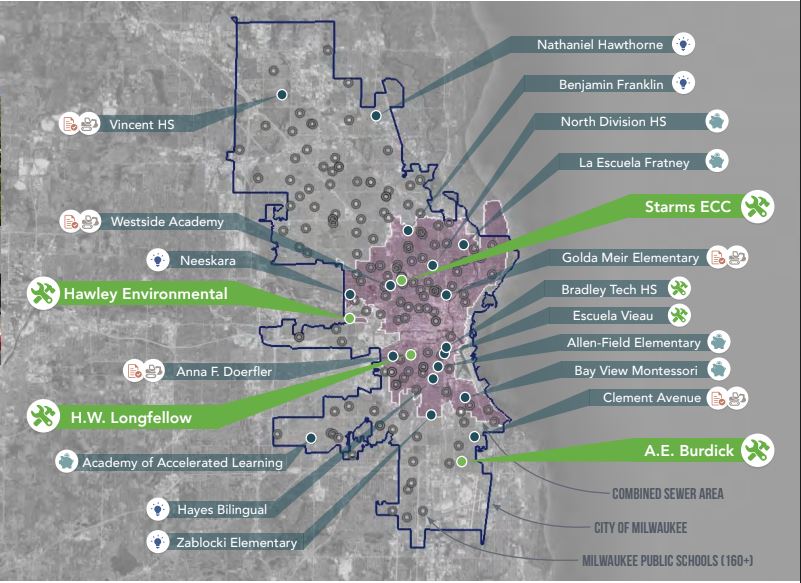By. Angeline Koch
Impervious surfaces or hardscapes such as asphalt, sidewalks, and concrete playgrounds characterize much of the built environment. So much so, in fact, that we no longer notice how these surfaces shape the contours of the urban landscape. Impervious surfaces prevent the absorption of rain water into the ground; instead, water flows over the surface, picks up pollutants and toxicants, and runs into sewer drains, streets, and surrounding porous surfaces. The rapid flow of rain water over these surfaces can inundate sewage treatment plants and lead to street flooding, basement backups, and discharges of untreated water into rivers and, in the case of Milwaukee, into Lake Michigan and its tributaries. Excessive stormwater runoff costs millions each year in economic losses and infrastructure repair – which deter investment and impede socioeconomic progress. The good news is opportunities exist, especially at K-12 school sites, to replace crumbling asphalt and a sea of hardscape with beautiful, nature-inspired landscapes that reduce runoff, increase urban biodiversity, educate, and inspire.
Milwaukee Public Schools (MPS), the largest public school district in Wisconsin, is embracing this opportunity to redevelop its schoolyards. MPS properties (165) in the City of Milwaukee include over 500 acres of impervious surfaces that contribute stormwater runoff to Lake Michigan and its tributaries via gray infrastructure maintained by the Milwaukee Metropolitan Sewerage District. Converting this massive network of stormwater liabilities into a constellation of green infrastructure assets presents an opportunity to improve water quality in the Milwaukee Estuary Area of Concern, as well as educate students about the value of natural habitat in an urban environment.
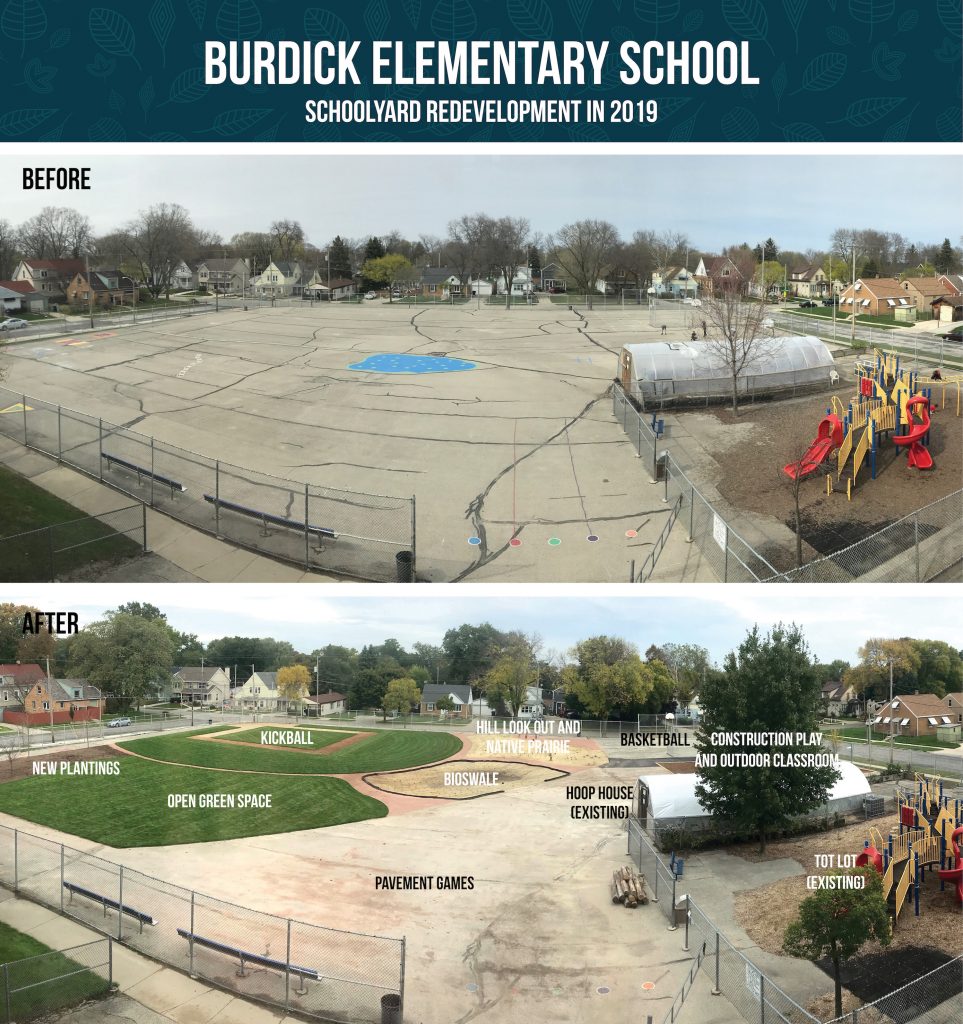
The primary objective of the MPS schoolyard redevelopment project is to remove impervious asphalt from playgrounds and replace it with green infrastructure elements like underground cisterns, porous play surfaces, rain gardens, and bioswales. Green infrastructure slows the flow of stormwater runoff and often includes bio-filtration elements that are engineered to remove and reduce the level of pollutants and toxicants in the runoff before they reach waterways and sewage treatment facilities. A secondary objective of this project is to create outdoor classrooms and learning spaces where curricular connections can be made to these nature-inspired landscapes.
So far, nine schoolyards have undergone redevelopment, four in 2019 (Cohort 1) and five in 2020 (Cohort 2). Both Cohorts 1 and 2 involved detailed design, permitting, and construction of green infrastructure. Program partners, including the Milwaukee Metropolitan Sewerage District, City of Milwaukee Department of Public Works, and the City’s Environmental Collaboration Office, provided funding and technical support for construction and design development.
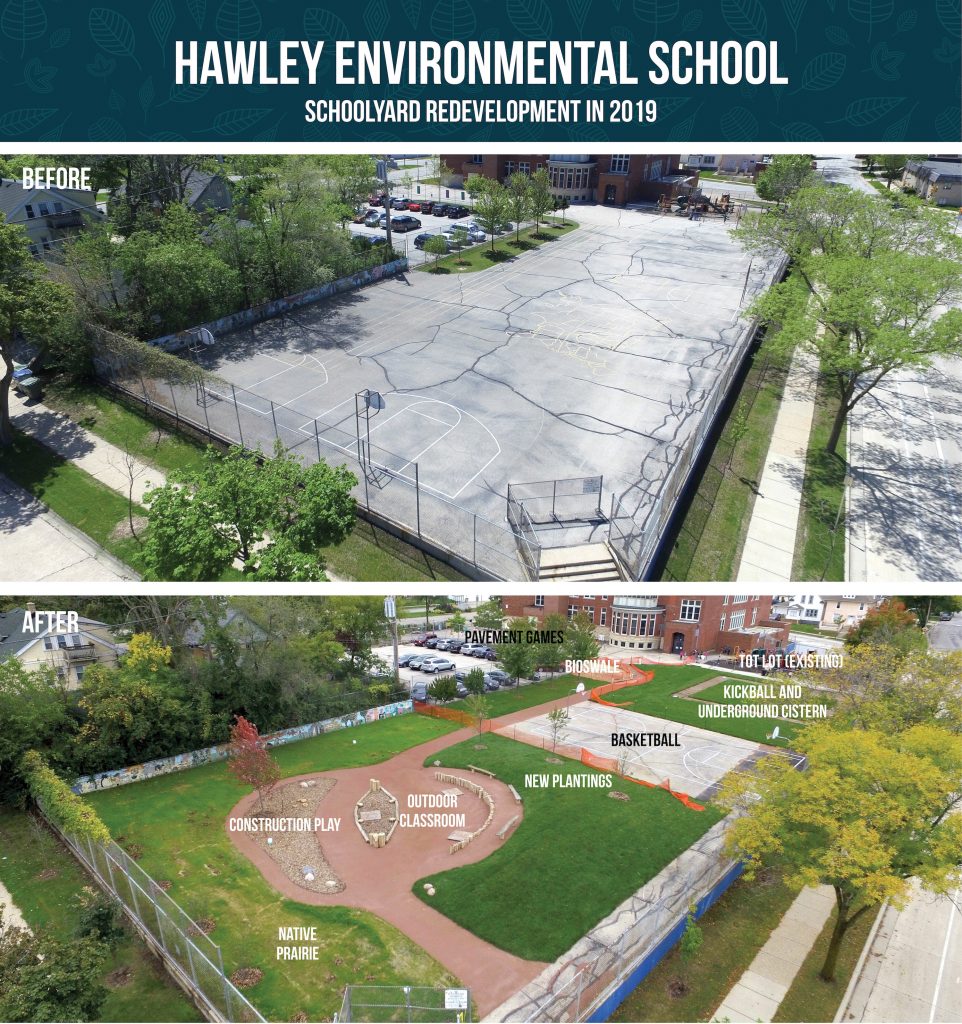
So far, the MPS schoolyard redevelopment project is proving to be a success. In the case of Cohort 1, 81,770 square feet of asphalt was removed from all four sites and the following green infrastructure elements were installed:
- A 20,000 gallon underground cistern
- A 24,235 gallon underground cistern
- Two above ground cisterns for rainwater harvesting totaling 550 gallons
- 18,550 square feet of porous pavement
- Five bioswales totaling 5,970 square feet
- A native prairie
- Two grass softball fields
- A porous poured-in-place playground in the shape of Lake Michigan
- One diversion of stormwater from the street into a new school bioswale
- 21 native trees
- Thousands of native rain garden plugs
According to the U.S. Environmental Protection Agency’s National Stormwater Calculator, approximately 4.7 million gallons can be managed annually through Cohort 1’s new green infrastructure assets, meeting Cohort 1’s target. Cohort 2 is on track to exceed its goal of managing 3.1 million gallons of stormwater. A third cohort is under development with construction to start in summer 2020.
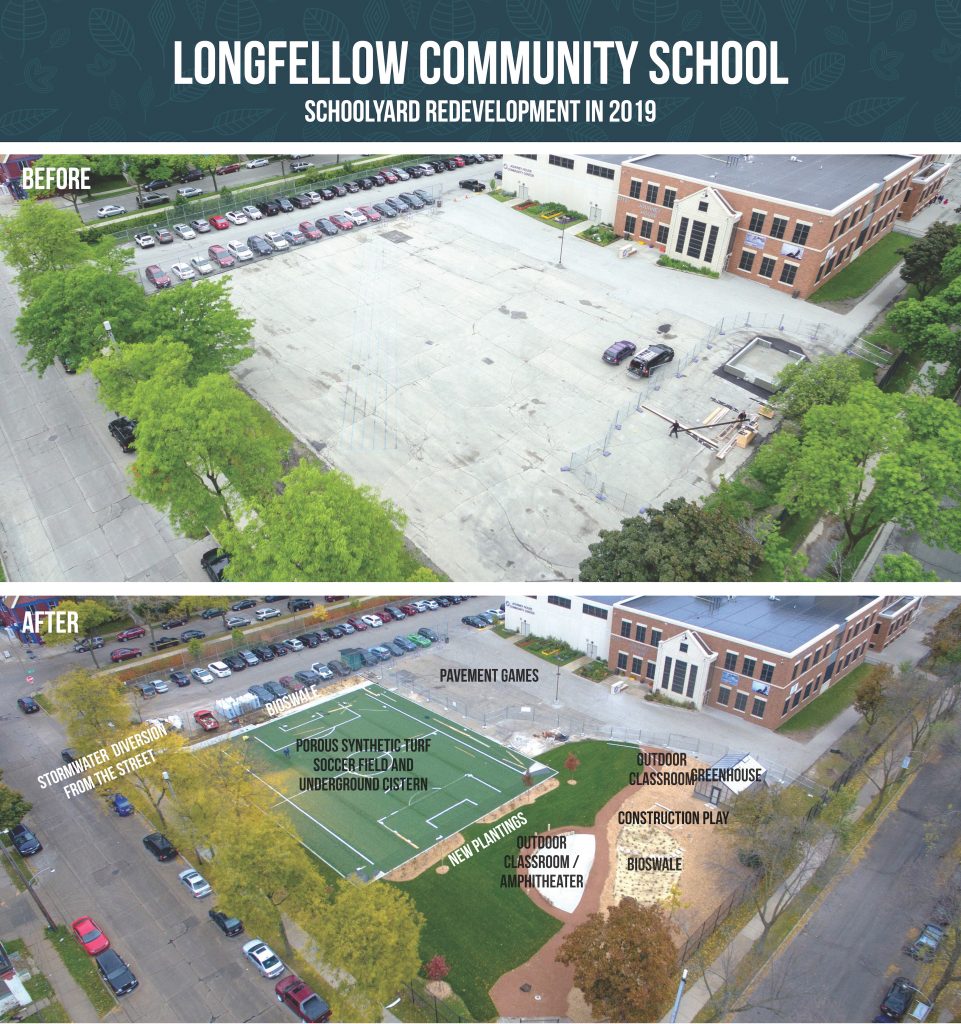
The installation of green infrastructure was only one part of the MPS schoolyard redevelopment project. The second, equally important part was the creation of outdoor classrooms and learning spaces. MPS worked with local partners, such as the Fund for Lake Michigan and the Great Lakes Restoration Initiative, to develop these spaces. The district also worked with Green & Healthy Schools Wisconsin and Milwaukee Riverkeeper to help teachers develop science, technology, engineering, arts, and math curriculum that could be used in conjunction with these spaces. Additional support was provided by ReFlo, which works with schools to develop conceptual schoolyard development plans and support drafting curricular connections to the new playground elements.
In fall 2019, over 1,000 students in grades K-8 engaged with Cohort 1’s nature-inspired landscapes to learn about topics such as the water cycle and how green infrastructure slows stormwater runoff and filters toxicants before the water enters the sewer system or surrounding environment. These students also learned about freshwater science, ecology, and the environment through visits to local nature centers and museums and presentations given by guest speakers from the community.
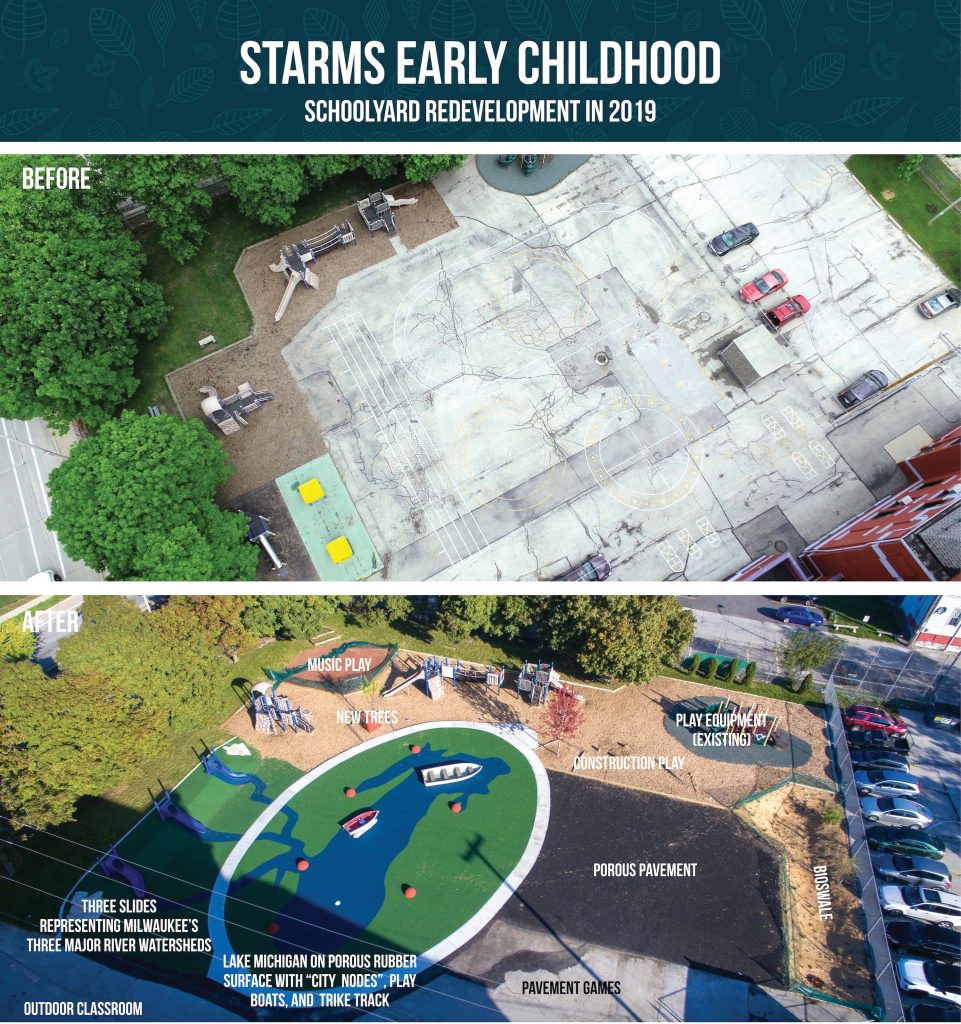
COVID-19 threw a bit of a curve ball this year when it came to planning and constructing MPS’ new schoolyards, but it also offered a silver lining in the call for more outdoor learning. MPS is responding to this call by ensuring future schoolyard projects include expanded seating; focused instruction areas where whiteboards or blackboards can be hung and used by teachers; electrical functionality for outdoor shade structures to power computers, lights, and speakers; and a biodiverse assortment of native plants and trees that can be integrated into science lessons. Project managers and curriculum specialists also placed a renewed focus on placing educational and artistic signage throughout the schoolyard redevelopments to ensure applicability for multiple grade bands across content disciplines.
MPS is proud of the investment they’ve made through these schoolyard redevelopment projects. These nature-inspired landscapes not only improve freshwater quality by preventing contaminated runoff from entering local waterways, but they also provide much needed outdoor learning space and green space for our urban students.
Author Bio
Angeline Koch is the Sustainability Project Specialist for Milwaukee Public Schools (MPS). Ms. Koch has 10 years of community development experience supporting implementation of green infrastructure at MPS schools. She has a J.D. and M.S. in Freshwater Science and Technology.

